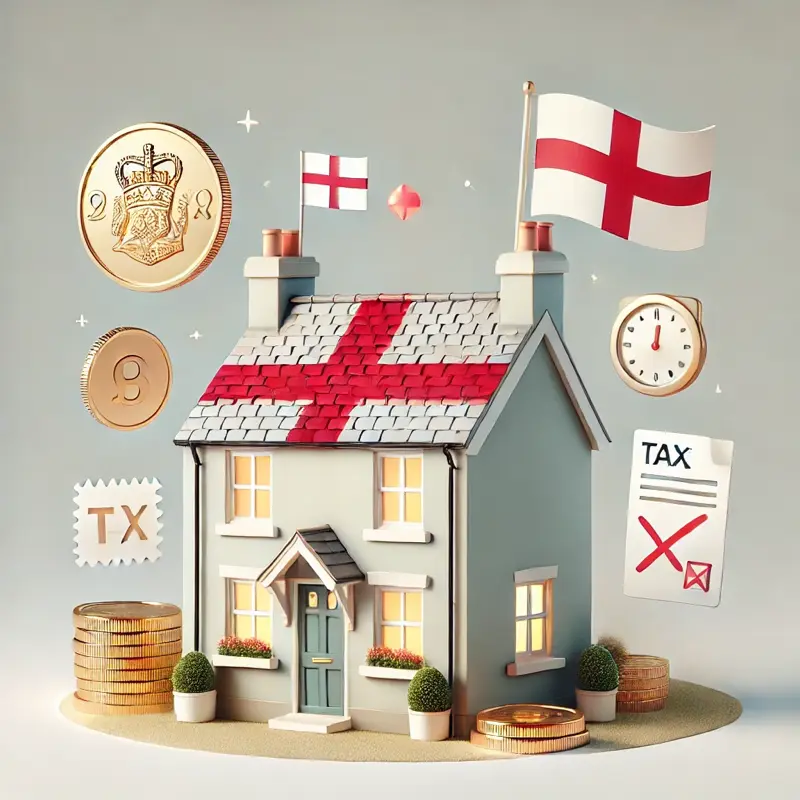
Understanding Stamp Duty in England and Northern Ireland
Learn how Stamp Duty works in England and Northern Ireland, including rates and how to calculate it.
Purchasing a property is a significant milestone, but it comes with various costs beyond the purchase price. One of these is tax, and in England and Northern Ireland, this tax is called Stamp Duty Land Tax (SDLT). While similar taxes exist in Scotland and Wales, the rules and rates differ, so this guide focuses solely on Stamp Duty in England and Northern Ireland.
What Is Stamp Duty and When Does It Apply?
Stamp Duty is a tax calculated as a percentage of the total property price. However, it isn't a flat rate—different portions of the property price are taxed at different rates. Additionally, certain circumstances can alter the rates you'll pay. For instance:
- If you're buying your first home, you may qualify for lower rates.
- If you're buying an additional property, higher rates will apply.
If you just want to know the final amount of tax you'll need to pay, simply use the home calculator. Otherwise, read on to learn the details behind the calculations.
Standard Stamp Duty Rates
For most property purchases, the rates in Table A apply. Here's how Stamp Duty is calculated for a property priced at £310,000:
- 0% on the first £125,000 = £0
- 2% on the next £125,000 = £2,500
- 5% on the remaining £50,000 = £3,000
Total Stamp Duty: £5,500
The amount you pay depends on your specific property price and circumstances, so let's explore some of the factors that could change your rates.
| Property Price Band | Rate |
|---|---|
| Up to £125,000 | 0% |
| £125,001 to £250,000 | 2% |
| £250,001 to £925,000 | 5% |
| £925,001 to £1.5 million | 10% |
| Over £1.5 million | 12% |
Table A: Standard Stamp Duty rates for residential properties
Relief for First-Time Buyers
If you're purchasing your first home, you might benefit from First-Time Buyers' Relief, which reduces the amount of Stamp Duty payable. To qualify, you must meet the following conditions:
- Neither you nor anyone you're buying with can have owned a residential property before. This includes inherited properties.
- You must intend to live in the property as your main residence.
- The property price must not exceed £500,000. If the price is above this limit, the relief doesn't apply, even for the portion below £500,000.
If eligible, you'll pay the rates outlined in Table B.
| Property Price Band | Rate |
|---|---|
| Up to £300,000 | 0% |
| £300,001 to £500,000 | 5% |
Table B: Stamp Duty rates for first-time buyers
Higher Rates for Additional Properties
If you're purchasing a second home or an additional property, all standard rates (Table A) increase by 3%. This surcharge applies regardless of whether the property will be used as a buy-to-let or a holiday home. Adjusted rates can be found in Table C.
| Property Price Band | Rate |
|---|---|
| Up to £125,000 | 5% |
| £125,001 to £250,000 | 7% |
| £250,001 to £925,000 | 10% |
| £925,001 to £1.5 million | 15% |
| Over £1.5 million | 17% |
Table C: Stamp Duty rates for additional properties
Temporary Pandemic Relief Rates
If your purchase completes before 1st April 2025, you may still benefit from the temporary lower rates introduced during the pandemic. These rates are shown in Tables D-F and apply to standard purchases, first-time buyers, and additional properties. After this date, the original higher rates in Tables A-C will return.
Keep in mind that finalising a property purchase typically takes three to four months. If delays occur, you could miss the deadline and face higher rates. Plan your finances carefully to ensure you can still afford the property if the higher rates apply.
| Property Price Band | Rate |
|---|---|
| Up to £250,000 | 0% |
| £250,001 to £925,000 | 5% |
| £925,001 to £1.5 million | 10% |
| Over £1.5 million | 12% |
Table D: Standard Stamp Duty rates for residential properties before 1st April 2025
| Property Price Band | Rate |
|---|---|
| Up to £425,000 | 0% |
| £425,001 to £625,000 | 5% |
Table E: Stamp Duty rates for first-time buyers before 1st April 2025
| Property Price Band | Rate |
|---|---|
| Up to £250,000 | 3% |
| £250,001 to £925,000 | 8% |
| £925,001 to £1.5 million | 13% |
| Over £1.5 million | 15% |
Table F: Stamp Duty rates for additional properties before 1st April 2025
Simplifying Your Stamp Duty Calculation
If all these rules and tables leave you feeling overwhelmed, you're not alone. Thankfully, there's an easier way to work out what you owe. Use the home calculator, which factors in your unique circumstances to provide an accurate Stamp Duty figure. Alternatively, refer to the decision flowchart below, which directs you to the appropriate table by answering three simple questions.
Stamp Duty may seem daunting, but with the right tools and a clear understanding of the rules, you can navigate it with confidence. Happy home buying!
